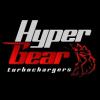Flow chart, help me interpret it
Announcements
-
Similar Content
-
Latest Posts
-
You will need to extend the turbo inlet pipe somehow, which could/might be done with silicone/rubber pipe, but might need steelwork, depending on your intake. And you will need to change the pipework on the outlet in teh same way, but this is more likely to need steelwork.
-
By pacman_1219 · Posted
I see... Any idea how much fab work is required? I note the Hygear megathread but its like 900 pages -
By joshuaho96 · Posted
I should try the experiment you're talking about, the throttle switch is still there carried over from the R32 and it's still all wired up but after I did the whole intake manifold refurb and had to recalibrate the TPS I managed to somehow get the idle switch reporting activation at 0.22V, then when I adjusted it to 0.45V for idle it decided the engine was permanently no longer idling which caused some very weird behavior, closed loop idle was disabled so it would basically be at the whims of the cold start valve and whatever the base timing table was at. Then just unplugging/replugging the TPS with the ECU live caused it to relearn the idle TPS position and decide 0.45V was idle. Presumably there's nothing in the TPS that allows for the throttle switch to "recalibrate" like that, not easily at least. -
Duh... to answer my own silly question, it's actually described in the FSM... ...400 pages away at the end of the manual, for RB25DE/DET signal descriptions, it cites the TPSwitch signal action, is dependent on the TPSensor value ~ this tends to infer the builtin POT voltage signal is the primary, and the switches are fallback/secondary should the POT fail/TPSensor signal lost (and switch alone with no TPSensor signal allows for base idle speed setting).... makes sense... they (TPS units) used to fail/wear the POT with time, they're not exactly built to last ~ having the switch as a redundancy gets around this...(or, it's less likely both signals would be lost as they're on different power rails)... and of course wrt RB26DETT, you have to electrically disconnect the IACV solenoid from the harness, to defeat idle air control...
-







Recommended Posts
Create an account or sign in to comment
You need to be a member in order to leave a comment
Create an account
Sign up for a new account in our community. It's easy!
Register a new accountSign in
Already have an account? Sign in here.
Sign In Now